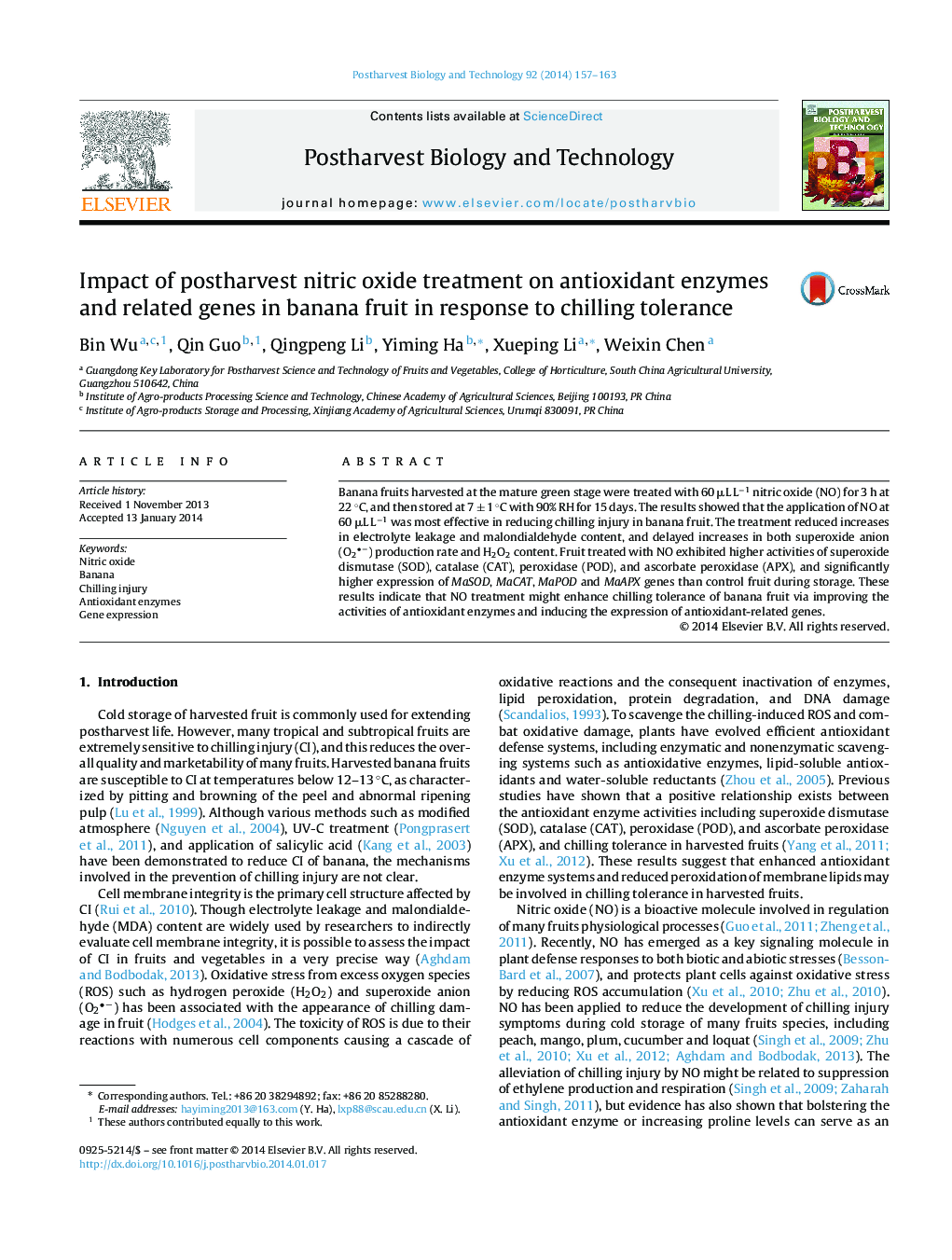| Article ID | Journal | Published Year | Pages | File Type |
|---|---|---|---|---|
| 4518228 | Postharvest Biology and Technology | 2014 | 7 Pages |
•The effects of NO on the antioxidative system of banana fruit in response to chilling tolerance were evaluated.•Application of NO at 60 μL L−1 was most effective in reducing CI.•NO treatment resulted in higher activities of antioxidant enzymes.•NO treatment resulted in higher expression of antioxidant related genes.•NO might enhance chilling tolerance via improving the antioxidative defense system.
Banana fruits harvested at the mature green stage were treated with 60 μL L−1 nitric oxide (NO) for 3 h at 22 °C, and then stored at 7 ± 1 °C with 90% RH for 15 days. The results showed that the application of NO at 60 μL L−1 was most effective in reducing chilling injury in banana fruit. The treatment reduced increases in electrolyte leakage and malondialdehyde content, and delayed increases in both superoxide anion (O2−) production rate and H2O2 content. Fruit treated with NO exhibited higher activities of superoxide dismutase (SOD), catalase (CAT), peroxidase (POD), and ascorbate peroxidase (APX), and significantly higher expression of MaSOD, MaCAT, MaPOD and MaAPX genes than control fruit during storage. These results indicate that NO treatment might enhance chilling tolerance of banana fruit via improving the activities of antioxidant enzymes and inducing the expression of antioxidant-related genes.
